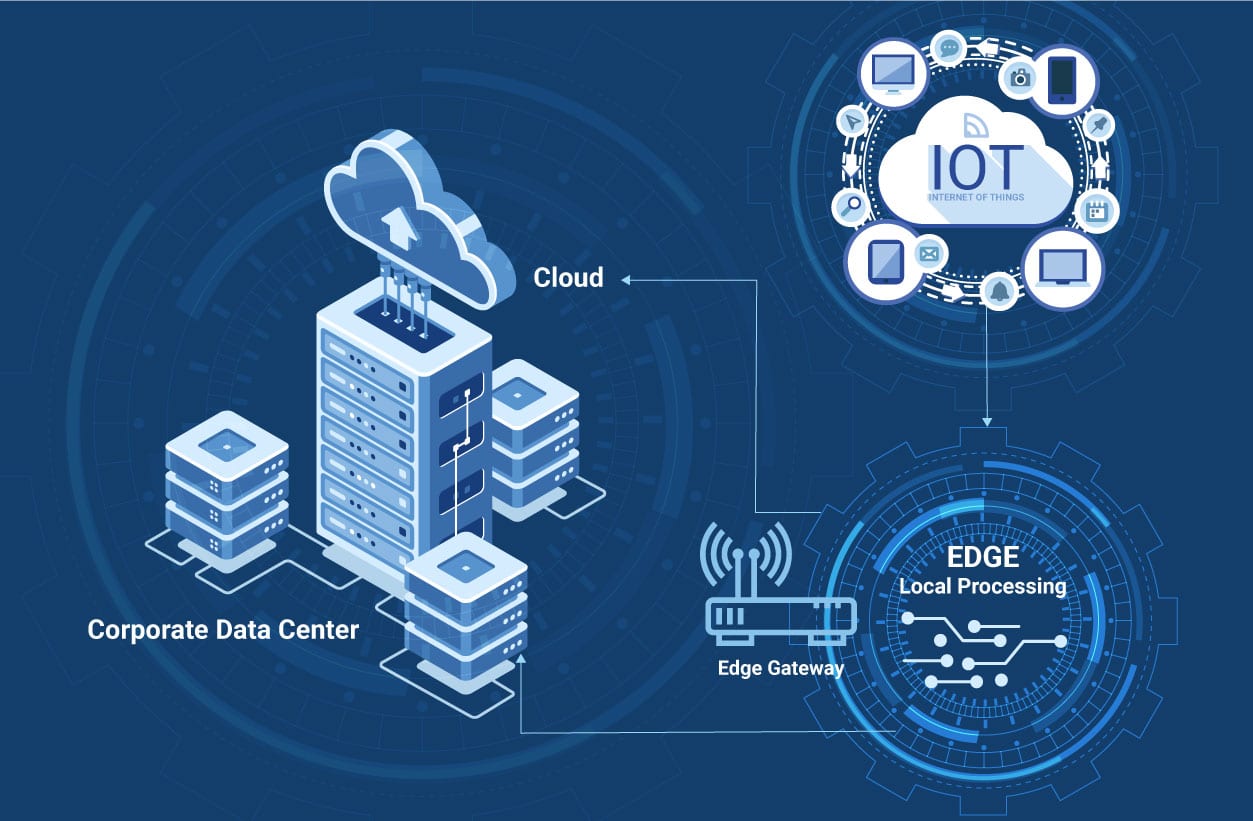IoT sensors are connected devices collecting and transmitting data over the internet. They can be monitoring environmental parameters such as temperature, humidity, air quality. Edge computing is technology doing data processing near the data source, so called at the edge network sometimes also called also fog. Together these solutions can improve performance and efficiency of environmental monitoring system because less data is transferred, and local processing reduces processing in main system e.g. in cloud.

Connection of IoT and Edge computing (Source: Cuelogic)
IoT and Edge computing help cities in environmental monitoring. Cities can gather real-time data for different parameters in various locations and if necessary, make informed decisions for their resources. For instance, if an air quality sensor detects high levels of pollution, the city officials can take immediate action before it affects public health.
These technologies have many benefits. They can improve performance of main system because data transfer latency decreases with less operational costs, and system is less vulnerable for threats in data security. Through gathering the environmental data, cities can develop policies and programs to promote sustainability and protect public health. Moreover, these technologies can support other industries like agriculture and transportation, leading to economic benefits.
Comments ()